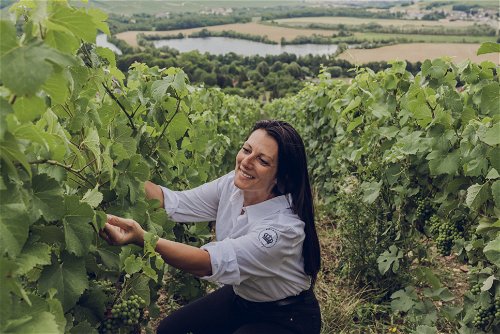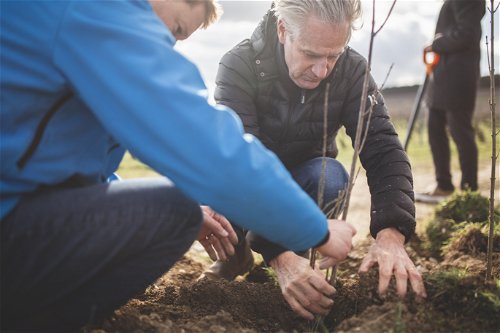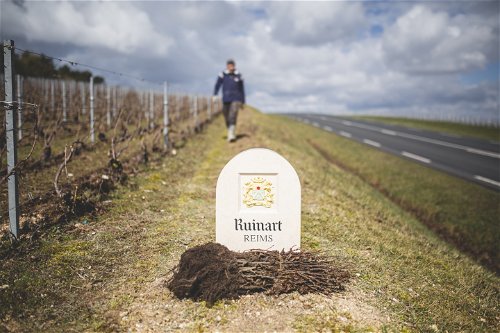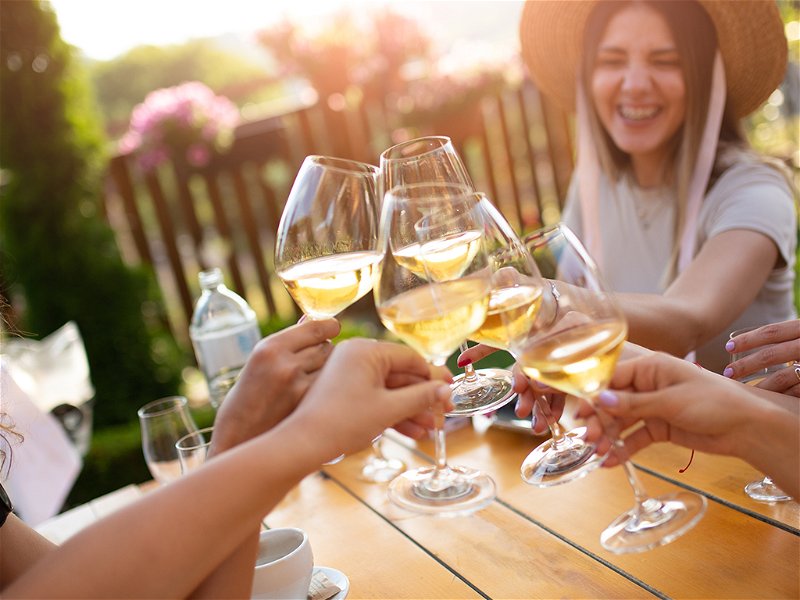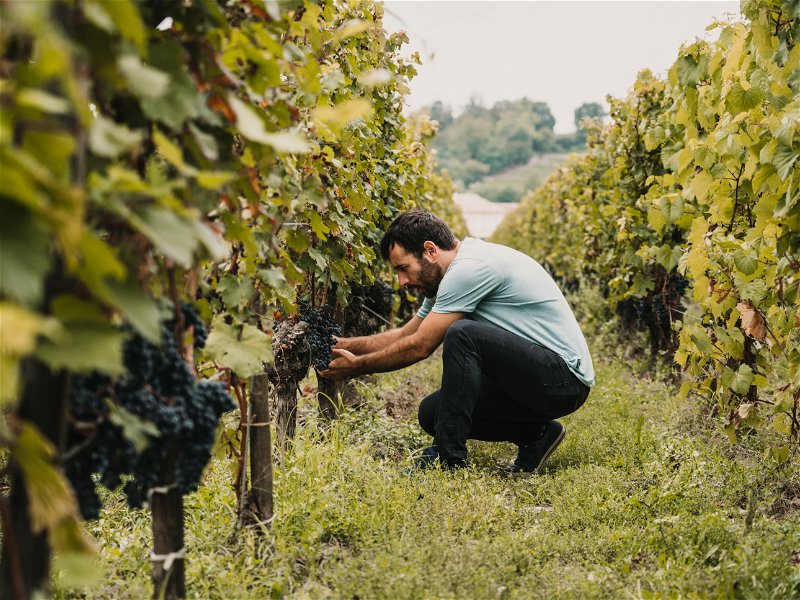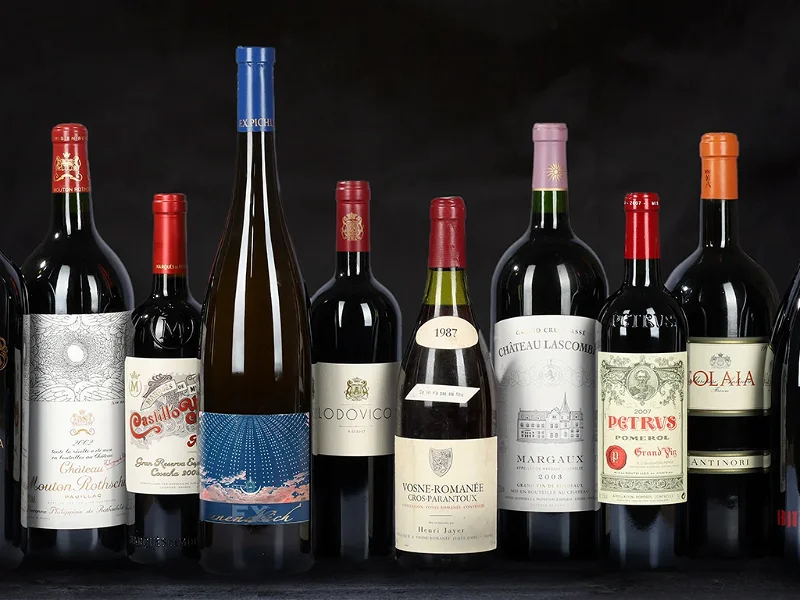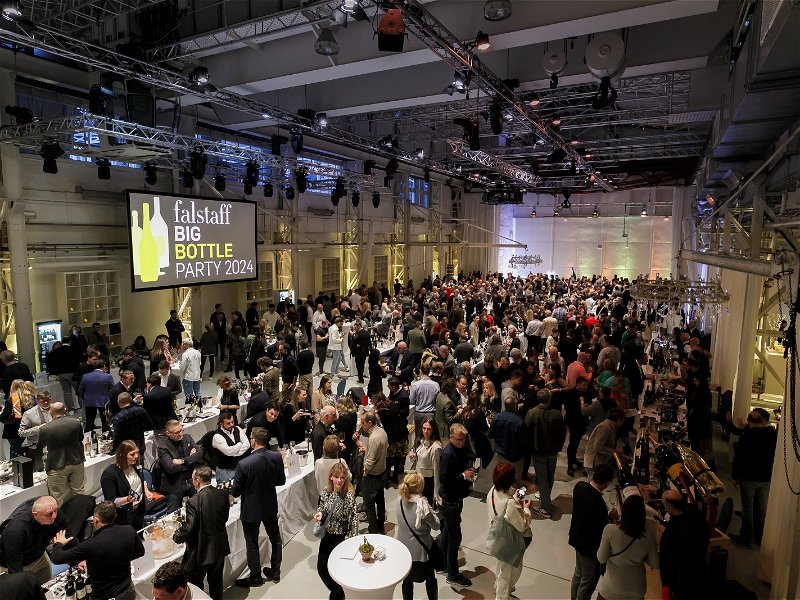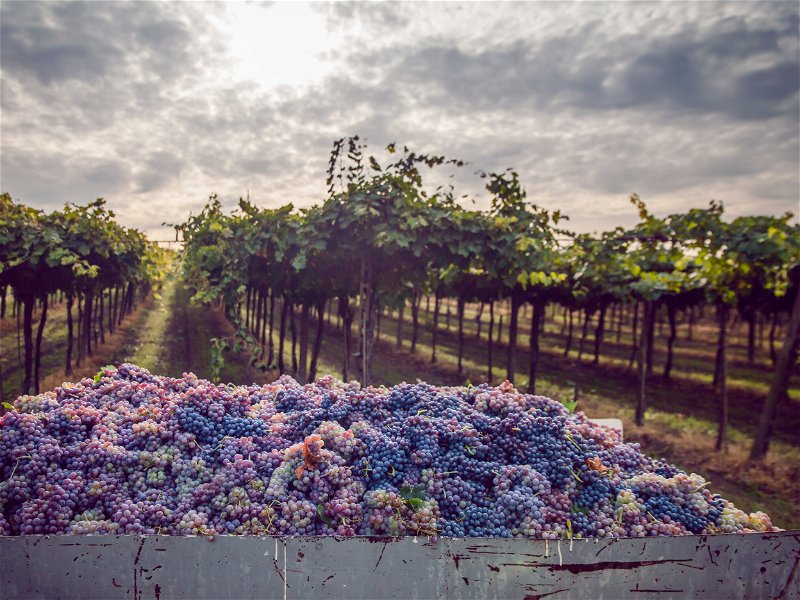Revolutionizing sustainability: Moët Hennessy's bold stride forward
Moët Hennessy, a cornerstone of LVMH's luxury empire, dominates the wine and spirits landscape with 27 prestigious brands. Producing one quarter of the world's champagne, the group is now accelerating its commitment to environmental stewardship, championing the cause for healthier soils and a cooler planet.
Arles in Provence, early June 2022: a large congress is being held in a hall of the former SNCF depot. Everything here breathes industrial history and yet also looks new, as the foundation of Swiss art collector and pharmaceutical heiress Maja Hoffmann has transformed the site into an event park - and added a spectacular Frank Gehry Tower, which serves as an art museum. However, Moët Hennessy, part of the mighty luxury goods group LVMH, has now invited guests to the "World Living Soils Forum" for two days in the former locomotive hall.
And now the floor is to you, scientists!
The first thing that impresses is the interior design the company has had installed: four stands made of recyclable wood take centre stage. Like the quarters of a cake, they form a kind of arena in the middle of which lectures and discussions take place. The wooden benches can accommodate around 200 visitors. For the programme items between the individual plenary events, the four pieces of cake are turned 180 degrees outwards: 50 people can take part in each of four different workshops. The moderators and experts leading these in-depth sessions are seated on mobile benches at the foot of each stand.
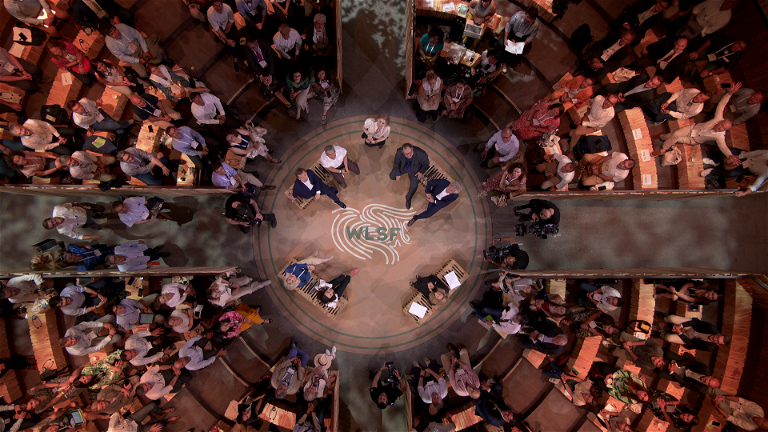
When Moët CEO Philipp Schaus opens the congress on the morning of the first day, he welcomes not only competitors such as representatives from Pernod Ricard and Martell Mumm Perrier-Jouët, but also numerous representatives from NGOs and environmental associations as well as dozens of scientists from all over the world.
In his opening remarks, Schaus said that Moët Hennessy had taken the initiative to promote sustainability and environmental aspects in agriculture. However, these are issues in which no one can be successful alone; the participation of the entire industry is required. "And now," he ended his speech, "the floor is to you, scientists!"
Networking
It may seem unusual for a dominant company to see itself as a catalyst for developments that will also benefit its competitors. However, the conference in Arles was of course not a charitable event; it primarily served the well-understood self-interest of a company that has dedicated itself to artisanal products - and which also has a very keen sense of how the tipping of natural systems directly threatens its own business areas.
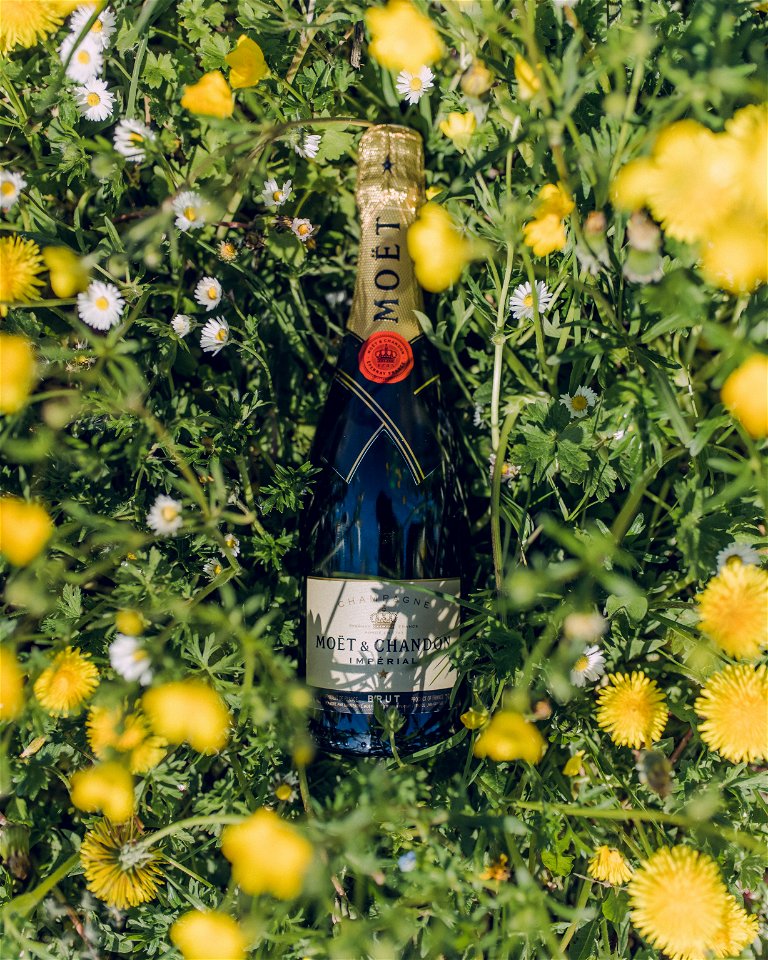
In 2012, the parent company LVMH launched a programme under the name "LIVE" (LVMH Initiatives For the Environment); things accelerated at Moët with the arrival of the Luxembourger Schaus at the End of 2017; in February 2020, he announced at the trade fair "Vinexpo/Wine Paris" that all champagne brands in the portfolio (Moët & Chandon, Dom Pérignon, Veuve Clicquot, Mercier, Ruinart, Krug) would from the end of 2020 manage their own vineyards without the use of herbicides.
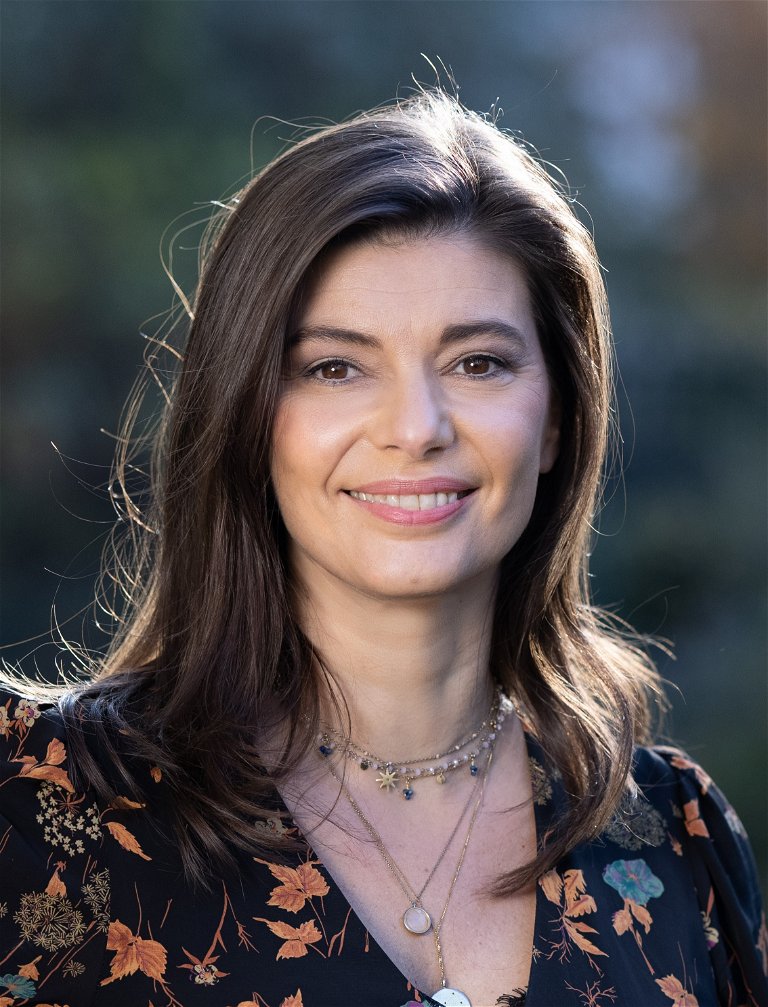
An initial test with presentations and panel discussions also took place at this trade fair: "We need to share knowledge," Schaus said at the time, "and we need external experts, these are all complex topics. So we have to work together and we have to be fast." At the same time, an executive was hired as Chief Sustainability Manager: Sandrine Sommer, who had previously made a name for herself at the iconic beauty label Guerlain, where, as packaging engineer, she had initiated the reorganisation of the products according to sustainability aspects.
People First
So how does Sommer get 27 different companies with their own work routines and corporate cultures on a uniform sustainability course? "In each of our companies, there are contacts and employees who work with my team and me. For example, my team pushes the question of Biodiversity; we work with those responsible on site to see where and how they can Ecological corridors that break the monoculture." In this way, the standard to which the houses work is gradually converging. But Sommer is also concerned about something else: "The climate problem is pressing and social problems are also pressing. You can't separate one from the other. That's why my mantra is : people first!"
We need to share knowledge
So much for the theory. But what does the conversion actually look like? Bodegas Terrazas de los Andes in Argentina is one example that ties in with the social theme. On this 600-hectare farm in a structurally weak region, the harvest helpers can bring their children to the winery in autumn, where school lessons and leisure activities are organised for them. Throughout the year, the winery organises art courses in 18 schools in the region, including in remote mountain villages. The best works are printed on greeting cards from the winery at the end of the year.
In some schools, pupils can sponsor a young tree in specially established tree nurseries and later plant "their" tree in a public park. Terrazas de los Andes runs recycling campaigns for PET bottles in elementary school - all to raise awareness of environmental protection issues. Older pupils are offered internships at the winery, where they can gain an insight into the various areas of work.
At the same time, the bodega is pushing ahead with the conversion to sustainability: 86 hectares have just been certified according to the criteria of regenerative agriculture, i.e. for a type of agriculture that minimises the consumption of non-renewable resources. The same certificate is to follow for the entire area by 2026.
Knowledge transfer is also key here: without further training programmes for employees - especially with regard to the use of scarce water resources - such goals would not be achievable.
Oyster beds, living soil
The whisky distillery Glenmorangie in the Scottish Highlands is concerned with a completely different issue: the industrial exploitation of the oyster beds on the east coast of Scotland caused hundreds of kilometres of such biotopes to disappear in the 19th century. Since 2014, scientists at Heriot-Watt University, funded by Glenmorangie, have been working in three phases to reintroduce European oysters to the Dornoch Firth not far from the company. In 2021, 20,000 oysters were released - with the hope that the oyster population will have grown to four million specimens by 2030.

By then, the banks could have reached such a large size that they will have a positive impact on the biodiversity of the fjord, but above all they will serve as a filter for the seawater. Glenmorangie breaks down 97 percent of its organic waste - such as the barley from whisky production - in anaerobic treatment processes on site. The oysters will one day take care of the remaining three percent, because a single oyster can clean up to 200 litres of seawater per day. Researchers are also interested in whether oysters bind CO2 on the seabed.
It is a proven scientific fact that healthy soils store CO2. The "4 per 1000" initiative, for example, which presented itself at the congress in Arles, assumes that building up organic matter in the top 30 centimetres of soil by 0.4 percent per year (i.e. four per thousand) is enough to stop the human-induced increase in CO2 in the atmosphere. However, many soils on the planet are currently so lifeless that they even release CO2 into the atmosphere instead of storing it. And the vicious circle continues: soils that do not contain biomass erode faster and are less able to retain moisture, which in turn exacerbates the water shortage.
Healthy soils, better products
All these considerations are decisive for the fact that Moët Hennessy sees the restoration of living soils as the most important lever of its initiatives - especially as healthy soils also produce better products. The necessary measures, such as working the soil without herbicides, planting trees and shrubs as intercrops in vineyards or training knowledgeable and motivated employees, initially cost money.
It is therefore fortunate that Moët Hennessy has a majority shareholder in Bernard Arnault, who clearly cares about these issues himself. LVMH is in the unusual position of somehow still being a family-run company despite being listed on the stock exchange. "If we had to focus exclusively on quarterly figures," says Philippe Schaus, "it would be a disaster for the luxury sector in which we operate."
Don't miss out!
Sign up now for our newsletter.

